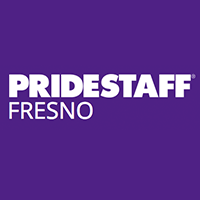Motivation, Commitment and Engagement
(Primal Differences for HR Thought Plan) |
 |
 Under pressure of ever-increasing competitiveness of an ever-changing economy, the HR department of every organization is focused on launching beautifully created training programs and development workshops for capturing the "focus" of an employee on his job, for creating that ever-elusive capability and to fire motivation resembling "live company, breathe company, sleep company." In simple words, all the above training and development programs have one primal agenda--make employees more productive, one of the ways of which is to make them "engaged." This particular phenomenon where the employee has his complete "focus on the job" is known in many organizations simply as employee engagement, engaged performance, committed employee, motivated employee or many times by more exotic names like people-oriented job capability module, etc.
Under pressure of ever-increasing competitiveness of an ever-changing economy, the HR department of every organization is focused on launching beautifully created training programs and development workshops for capturing the "focus" of an employee on his job, for creating that ever-elusive capability and to fire motivation resembling "live company, breathe company, sleep company." In simple words, all the above training and development programs have one primal agenda--make employees more productive, one of the ways of which is to make them "engaged." This particular phenomenon where the employee has his complete "focus on the job" is known in many organizations simply as employee engagement, engaged performance, committed employee, motivated employee or many times by more exotic names like people-oriented job capability module, etc.Notwithstanding above what is observed in common is that HR professionals with all their good intent still create programs which intermix the concepts of organizational behavior. In this particular thought paper, I have tried to clarify how three widely used, yet commonly misunderstood, concepts of "Motivation", "Commitment" and "Engagement" are primarily different from each other.
Motivation
What it is: Motivation is energy behind attainment of a particular desire. As per Arnold J. Robertson ("Work Psychology," 1991), motivation is a behavior that consists of:
- Direction of desire
- Effort for attaining that desire
- Persistence for attaining that desire
Theory: Motivation has been part of numerous research, experiments and studies. From old Indian scriptures like Vedas describing motivation as the basic desire which drives ego to achieve intended results, or Aristotle that it was "the real or the apparent good" of some anticipated consequence, or image of "what is to come" derived in "reference to what is present," that simulated a living organism to pursue it (if positive) or avoid it (if negative).
Famous theories which have left their impregnating effect on HR scenario are:
- Theory X and Theory Y (Douglas McGregor):
Theory X and Theory Y are about the working style of a supervisor/organization in relation to their subordinates/employees.
Theory X assumes that an employee by nature is unproductive, and therefore, has to be motivated to work better through coercion only.
Theory Y goes exactly opposite and assumes that an employee, when committed, will be self-directed and highly productive.
Observation: It is to be noted that though Theory X has been shown by research to be counter-productive, conclusive research on Theory Y has NOT been conducted to date. Therefore, the author's view is that one cannot solely rely on either of them for basing one's decisions.
- Herzberg's 2-Factor Theory (Herzberg):
The Herzberg 2-Factor theory contemplates about what an employee perceives as good and bad in a working environment.
- Satisfiers (Motivator): Employees feel good about job content, public recognition, challenge, development opportunities and working culture in the working environment.
- Dissatisfiers (Hygiene Factor): Employees feel bad about supervision, policy and administration, salary and working conditions.
- Satisfiers (Motivator): Employees feel good about job content, public recognition, challenge, development opportunities and working culture in the working environment.
- Hierarchy of Needs (Maslow):
Maslow argued that there are five needs of every person, and a person acts on them as per his position in the hierarchy model. As per Maslow's hierarchy, the needs of a person always start at the bottom of the first level and only when this level is satisfied, shall the employee move to the higher level.
- 5th level: Self-Actualization: Challenge, creativity, realization of potential, etc.
- 4th level: Esteem Needs: Self-esteem, confidence, respect, etc.
- 3rd level: Belonging Needs: Relationships including social circles, etc.
- 2nd level: Safety Needs: Security of self, family, resources, etc.
- 1st level: Physiological Needs: Food, water, air, etc.
- 5th level: Self-Actualization: Challenge, creativity, realization of potential, etc.
- McClelland's Achievement Model:
The author has found the Achievement Model to be one of the least understood concepts on motivation, but one of the most powerful in application. McClelland used the Thematic Appreciation Test (TAT) for arriving at research results. This theory states that every person has three dominant needs and that each need can measured:
- Need for Achievement (N-Ach): Need for achievement indicates the need of an individual to continually keep on achieving and excelling at their endeavors. This need is benchmarked against self-determined/accepted performance standards.
- Need for Affiliation (N-Affil): Need for affiliation indicates the need of an individual for belonging to groups, teams, society, and relationships.
- Need for Power (N-Pow): This indicates need for having institutional or personal power. This may be redefined as need for having control over people and situations. High N-Pow (institutional power) is a requisite for effective leadership.
- For high standards of excellence, employees should have High N-Ach.
- Good managers should have High N-Pow and low N-Ach.
- N-Affil should be lower than N-Pow for effective behaviors, as a high N-Affil scorer may tend towards nepotism, favoritism or submissive behaviors.
- Need for Achievement (N-Ach): Need for achievement indicates the need of an individual to continually keep on achieving and excelling at their endeavors. This need is benchmarked against self-determined/accepted performance standards.
Understanding and appreciation of motivation is the basis on which an HR professional conceptualizes, develops and implements organizational policies. In experiments by Dan Ariely ("Predictably Irrational," Harper Collins ed. 2009, Pg: 67-88), by Margaret S. Clark (Record Keeping in Two Types of Relationships, Journal of Personality and Social Psychology, Volume 47, Issue 3, September 1984, Pages 549-557) and Alan Fiske (Four Elementary Forms of Sociality, Psychological Review, 1992) one can observe that there exists primarily two separate categories of relationships in every individual's mind:
- Exchange or Market norms, where an individual thinks only in terms of money or trading for any service given or provided. Essence is of Give and Take.
- Community or Social norms, where requests are friendly requests on the basis of strength of relationships and need, only without any thought to monetary value. Essence is To Give As Much As I Can.
Observation: The above two relationship spheres operate in different manners. It was found that Communal Norm is more productive, but highly susceptible to mutate into Exchange Norm even if an iota of Exchange Norm is involved. These experiments indicate the following implications for HR:
- Dependence on monetary benefits only as a motivator leads to trade thinking, only without any increase in commitment, engagement or motivation as desired.
- Employees' relatedness with their organizations, peers, superiors and subordinates are social exchanges. Social exchanges work best when kept away from any type of monetary exchanges. Social rewards, appreciation and commitment work best when kept separate from any type of monetary benefit.
- Social rewards are much better motivators than monetary rewards.
What it is: Commitment refers to attachment and loyalty to a cause or to a role model. As per Mowday, Porter ("Employee-Organization Linkages," 1982), commitment refers to three characteristics:
- Desire to "remain" a member of an organization.
- Belief in and acceptance of values and goals of an organization.
- Readiness to exert considerable effort on behalf of the organization.
The problems with concept of commitment, especially when espoused by HR, are as follows:
- The measure of commitment cannot be the same for everyone, since an organization is a coalition of different interest groups (management, union, HR, finance, operative units, etc.). The varying motivation of different interest groups brings up the question, "Commitment to what?" ("Power in and around Organizations" by Mintzberg, 1983).
- Author will place an argument that another problem with HR rational of commitment is that at any point of time people have multiple commitments, which are consistently changing due to internal factors like newfound interest, focus on society, etc., and external factors like change in policy, devaluation of currency, etc. Individual behavior of an employee, therefore, will keep changing due to intensities of these different, multiple commitments.
- When two separate areas, "Commitment to What" and "Multiple Commitments," are read together, then one can observe that the presence of "Direction of Commitment" and "Intensity of Commitment" makes linkage to performance a concern. As per D. E. Guest ("Personnel Management: The end of Orthodoxy," British Journal of Industrial Relations, pp: 149-176, 1991), high organizational commitment is associated with lower labor turnover and absence, but there is no clear link to performance. That is to say, high commitment does not lead to high performance on the job. On a lighter note, this is analogous to: high overtime does not necessarily mean high productivity.
Application: Commitment to an organization in itself may not lead to higher job performance, since individual employee efforts are rarely visible in the "big picture" of organizational performance. However, commitment to a cause of an organization (or even a team) led by a competent leader should show desired results, i.e., direction given by a team leader becomes sole guidance for directing the efforts of committed employees in that team. This, in turn, also makes an important observation that when HR is basing its program and planning on commitment, then the following is to be kept in mind:
- An employee can be committed to both the team and organization.
- Organizational commitment can also be built by better implementation of company policies and practices.
- Team commitment can be built by allowing people to affiliate more.
- Team commitment, and thereby team results, are dependent on the team leader.
Engagement
What it is: Engagement is said to be present when an employee displays positive discretionary behaviors and efforts towards completion of the job. This can be understood as below:
- Discretion in behavior and efforts: A person who chooses to perform an action/behavior or chooses not to perform an action/behavior is said to have exercised discretion at his disposal.
- Positive discretion in behavior and efforts: A person who chooses to perform an action/behavior or chooses not to perform an action/behavior, both of which lead to completion of job, is said to have exercised positive discretion at his disposal. A negative discretion shall be slacking at work.
- Intensity of positive discretion in behavior and efforts: It is the extra mile which an employee is willing to walk for completion of his job that defines the presence of engagement. A high intensity of positive discretion actions assures that seemingly long stuck issues get resolved.
The following matrix, http://www.scribd.com/doc/44574926/Motivation-Commitment-and-Engagement-Primal-Difference-for-HR-Thought-Plan, should make the difference between engagement and commitment clearer (courtesy: pp: 337, Armstrong's Handbook of Human Resource Management Practice, 11th Ed., 2009).
Observation: The above matrix brings out two points to be observed as below:
- High commitment may not always lead to job engagement, yet it is better than low commitment.
- A highly productive employee may not necessarily be attuned to a corporation. In worst case scenarios, such an employee shall resign or display hyper competitiveness, thus damaging the work environment.
- Rational Aspect: This aspect talks about an employee's rational understanding of their roles, work itself, fit of work with business, economy-oriented issues, etc.
- Emotional Aspect: This aspect talks about an employee's feelings of their role, work-value alignment, relationships, etc.
- Job engagement is about work or the job itself:
- Giving an individual a job which they like is creating employee engagement.
- Training them to do his/her job better is better engagement.
- Creating an environment which enables them to do their job better is better engagement.
- Letting them do the job where they can succeed is job engagement.
- Ideally, a job should be so irresistible that the employee finds solace in their job (musicians, artists, etc.).
- Giving an individual a job which they like is creating employee engagement.
- Job engagement is NOT about:
- If the employee doesn't like their job, then engagement cannot be found, even if their performance is superior.
- Breaking rhythms of work (micromanaging), interruptions in work (meetings!), dictating factors which lead to a feeling in an individual that one will not be able to do their job to their own satisfaction is losing engagement.
- Learning opportunities on the job may or may not increase engagement.
- If the employee doesn't like their job, then engagement cannot be found, even if their performance is superior.
| Articles Sources: http://EzineArticles.com/?expert=Gaurav_Kapil Link for viewing above article with matrix: http://www.scribd.com/doc/44574926/Motivation-Commitment-and-Engagement-Primal-Difference-for-HR-Thought-Plan About the Author: Gaurav Kapil, MBA (HR): MDI, Gurgaon, Electronics & Communication Engineer: OIST-RGTU, Graphologist: KIT, Copyright © Gaurav Kapil 2010 |
